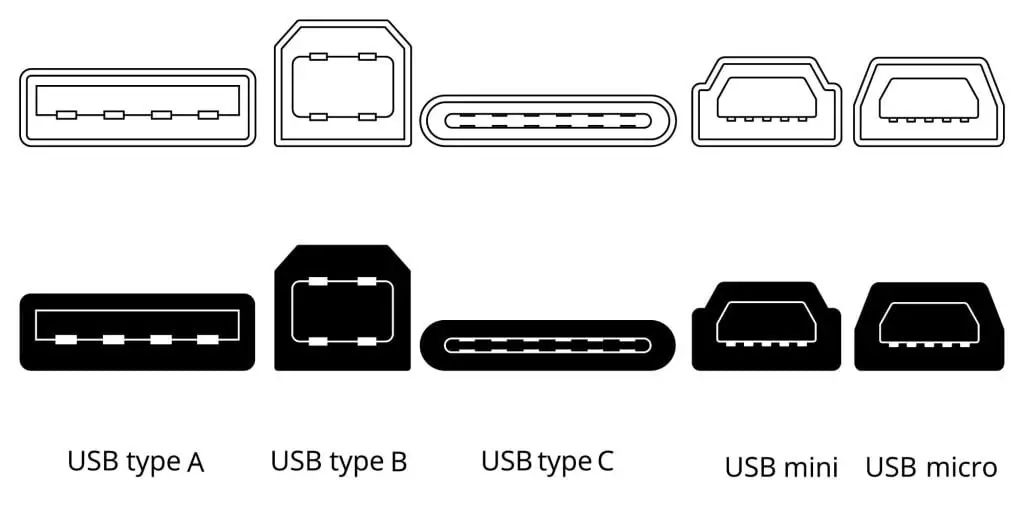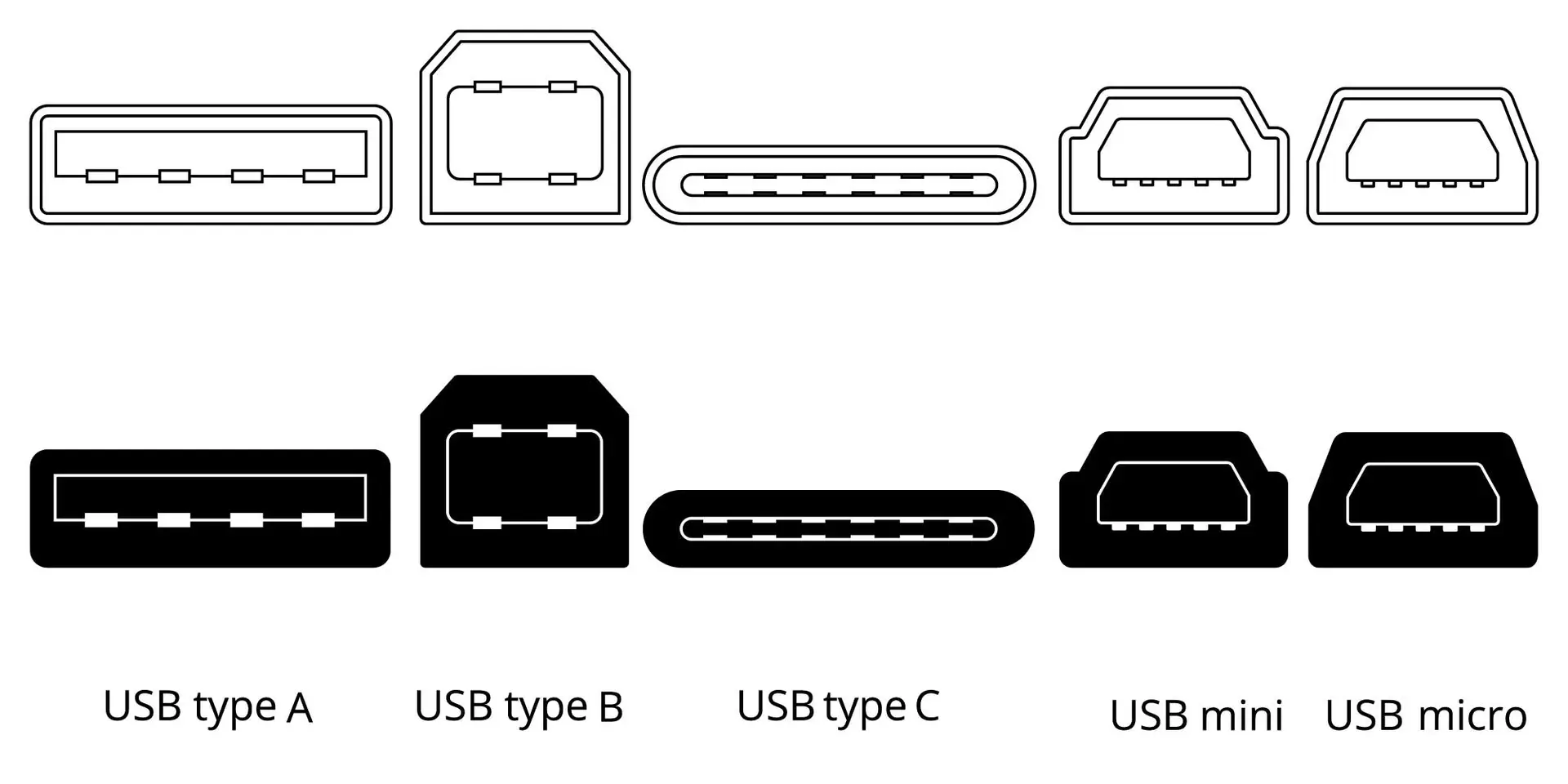Welcome to the ABC of USB, where we embark on an exciting exploration of the integral role USB devices play in our hyper-computerized world.
Join us as we unravel the mystery behind USB, delve into its diverse standards and connectors, and discover the fascinating universe that lies within this universal connection method.
What Exactly Does USB Stand For?
Ever wondered what those three letters, USB, really stand for?
USB is the acronym for Universal Serial Bus, a name bestowed upon the port that enables us to connect peripherals to our computers.
Unlike other ports, USB possesses a remarkable plug-and-play capability, eliminating the need for system reboots when connecting devices.
USB goes the extra mile by automatically detecting and installing the required software for seamless device operation.
It has revolutionized the way we interact with our computers, making it a breeze to connect peripherals such as keyboards, mice, digital cameras, scanners, printers, and even mobile phones. USB’s versatility knows no bounds.
Back in 1996, visionaries from Intel, Microsoft, IBM, Compaq, DEC, NEC, and Nortel recognized the need for standardization in connection ports.
USB emerged as their collaborative brainchild, ending the incompatibilities plaguing earlier connectors like serial ports, parallel ports, and game ports.
Beyond compatibility, USB offers a myriad of advantages, including instantaneous device recognition, combined data, and power transmission, and impressive transfer speeds of up to 1250 Mbps in the current standard.
What are the Different Types of USBs?
Ah, the USB jungle! If you’ve ever felt bewildered by the alphabet soup of USB types, fear not.
We’re here to guide you through this maze of connectors, ensuring you emerge with a clear understanding of the various USB standards.

Let’s start by demystifying the different USB standards, categorized based on their data transfer speeds:
- USB 1.0: The granddaddy of them all, USB 1.0 boasts the distinction of being the oldest and slowest USB standard. With a transfer rate of up to 1.5 Mbit/s (188 kB/s), it primarily caters to human interfaces like keyboards, mice, and webcams.
- USB 1.1: A slight improvement over its predecessor, USB 1.1, also known as full speed or “plug and play,” offers a transfer rate of up to 12 Mbit/s (1.5 MB/s). Although still far from the speeds of future standards, it marked a significant step forward.
- USB 2.0: This standard reigns supreme as the most widely adopted USB version to date. With two data lines and two high-speed power lines, USB 2.0 can transfer data and charge devices at 2.5W of power.
- USB 3.0: Prepare to be wowed by the blazing-fast Super High-Speed USB 3.0. With a transfer rate of up to 4.8 Gbit/s (600 MB/s), ten times faster than USB 2.0, it owes its speed boost to the five additional contacts it introduces.
- USB 3.1: Dubbed Super High-Speed+ or SuperSpeed, USB 3.1 doubles the speed of its predecessor, boasting an impressive transfer rate of up to 10 Gbit/s (1.25 GB/s). Type C connectors commonly utilize this standard.
- USB 3.2: Unveiled in February 2019, USB 3.2 tantalizes us with the promise of transfer rates reaching up to 20 Gbit/s (2.5 GB/s). The first peripherals compatible with this standard emerged in 2020, ushering in a new era of USB performance.
- USB 4.0: The latest USB standard, introduced in 2019, USB 4.0 is the pinnacle of USB evolution. With transfer rates of up to 40 Gbit/s (5 GB/s), it delivers unparalleled speed and performance. The first computers equipped with USB4 arrived in 2021, setting the stage for the future of USB technology.
Now that we’ve deciphered the USB standards, let’s shift our focus to the connectors themselves. Prepare for an enchanting journey through the realm of USB connectors, each with its distinctive characteristics and typical standards.
- USB Type A: The mighty USB Type-A connector has long been the go-to for connecting peripherals to main computers. It has ruled the roost and is compatible with USB 1.0, 2.0, 3.0, and 3.1 standards. However, USB 3.0 connectors stand out with their iconic blue plastic internal tab.
- USB Type B: Designed to connect peripherals like printers and scanners, the trusty USB Type B connector has faithfully served its purpose. Two types exist: the “conventional” one for USB 1.0 and 2.0 standards and a slightly different variant with a blue tab for USB 3.0.
- USB Type C: Witness the rise of the USB Type C connector, the epitome of innovation. Replacing the aging MicroUSB, its standout feature is complete reversibility, enabling hassle-free connections from either side. Thunderbolt 3 also embraces this connector as an alternative to HDMI, further solidifying its prominence.
- Mini USB: Once upon a time, the Mini USB connector reigned supreme. Miniaturized to accommodate smaller peripheral connections, it found widespread use in cameras and mobile phones. However, its glory days are now a distant memory.
- Micro USB: Behold the successor to the Mini USB, the ever-popular Micro USB. This connector has become the go-to choice for small devices, capturing the hearts of manufacturers and consumers alike.
While newer devices have moved on, you may still encounter Micro USB if you have a lower-end or slightly older mobile phone.
Additional FAQs
- Q1: Can I use USB 3.0 devices with older USB ports?
A1: Absolutely! USB 3.0 devices are backward compatible with older USB ports, but they will operate at slower speeds than the respective standards.
- Q2: Are USB Type C connectors and Thunderbolt 3 the same?
A2: While they share the same physical connector, USB Type C and Thunderbolt 3 are not identical. Thunderbolt 3 is a technology that utilizes the USB Type C connector and offers even higher transfer speeds and additional features.
- Q3: Can I charge my USB Type-C laptop using a USB Type-A charger?
A3: Charging a USB Type-C laptop using a USB Type-A charger with an appropriate adapter or cable is possible. However, the charging speed may be slower than a dedicated USB Type C charger.
ABC of USB Conclusion
ABC of USB Conclusion
USB, the Universal Serial Bus, has transformed the way we connect and interact with our devices.
From its humble beginnings as a collaborative effort to standardize connectors, USB has evolved into a powerful and versatile interface.
Whether you’re plugging in a keyboard, transferring data from a camera, or charging your smartphone, USB has your back. So, embrace the world of USB, explore its diverse types, and revel in the seamless connectivity it offers.
Remember, USB is your trusty companion in the digital realm, providing seamless connections and powering countless devices.
Embrace the USB revolution, and let it enhance your technological experiences like never before.

